Thessaloniki spreads around a large bay of the Aegean Sea, but as far as its streets are concerned, there are a couple of parallel ones that help with the orientation. One of the main streets is Egnatia. What is particularly interesting about it is that it follows exactly the route of the ancient Roman road that used to connect western parts of the province of Macedonia with the eastern ones and Asia Minor.
The road that leads from the motorway connecting the border with the Former Yugoslav Republic of Macedonia and Athens (the north-south direction) leads towards Thessaloniki and its centre and it literally continues straight into Egnatia street making it very easy to get to the centre of Thessaloniki. This route simply leads one into the city all thanks to the ancient Romans who laid it down. Parallel to Egnatia street, closer to the sea, is the famous Tsimiski street. There are, of course, other streets parallel to these, but the two are somehow the main ones.
There are certainly streets that cross these two and this brings me back to my account of the Holy David’s Church. One of the transverse streets is Agias Sofia which in some of its sections are pedestrian, while in some others there is regular traffic in it. In some parts it seems impressive and in some other rather uninteresting. So, in order to get to the Holy David’s Church, one needs to follow Agias Sofia street upwards, just straight until getting to the part where after the crossroad a smallish continuation of the street bends slightly leftwards. This seems like a faint version of the spacious, impressive street around St. Sophia’s Church (Agias Sofia), more like a local lane, but it is precisely this inconspicuous section that will lead one to a board pointing the way to the now already nearby Holy David’s Church.
So, after the original attempt to visit the church and having memorized the route, I went down to the centre. Along my way I also passed by some other larger churches, but they were closed in the afternoon, with an addition that the Church of St. Sophia reopened at 6 pm.
I used my free time to eat something sweet. Generally speaking, Thessaloniki is full of spectacular pastry shops and my sincere advice is to visit them systematically, for one has to try different versions of sweets and cakes that are available.
 Sweets from Thessaloniki
Sweets from Thessaloniki
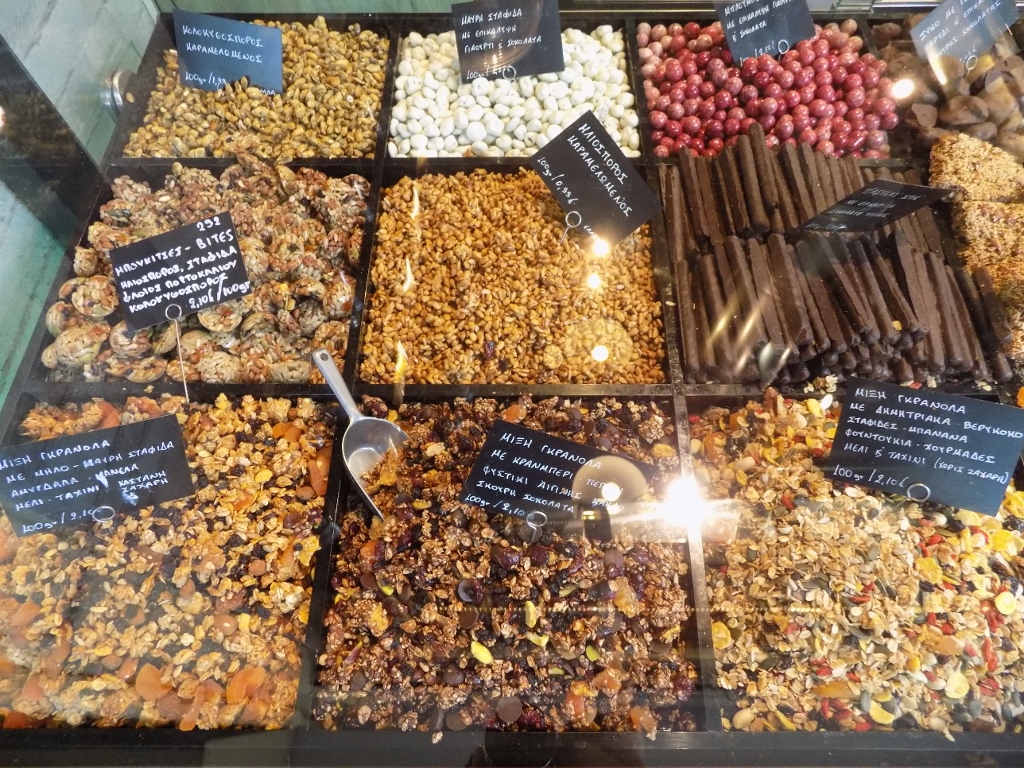 Sweets from Thessaloniki
Sweets from Thessaloniki
After the sweet break, I went back to visit the Church of St. Sophia dedicated to the Holy Wisdom.
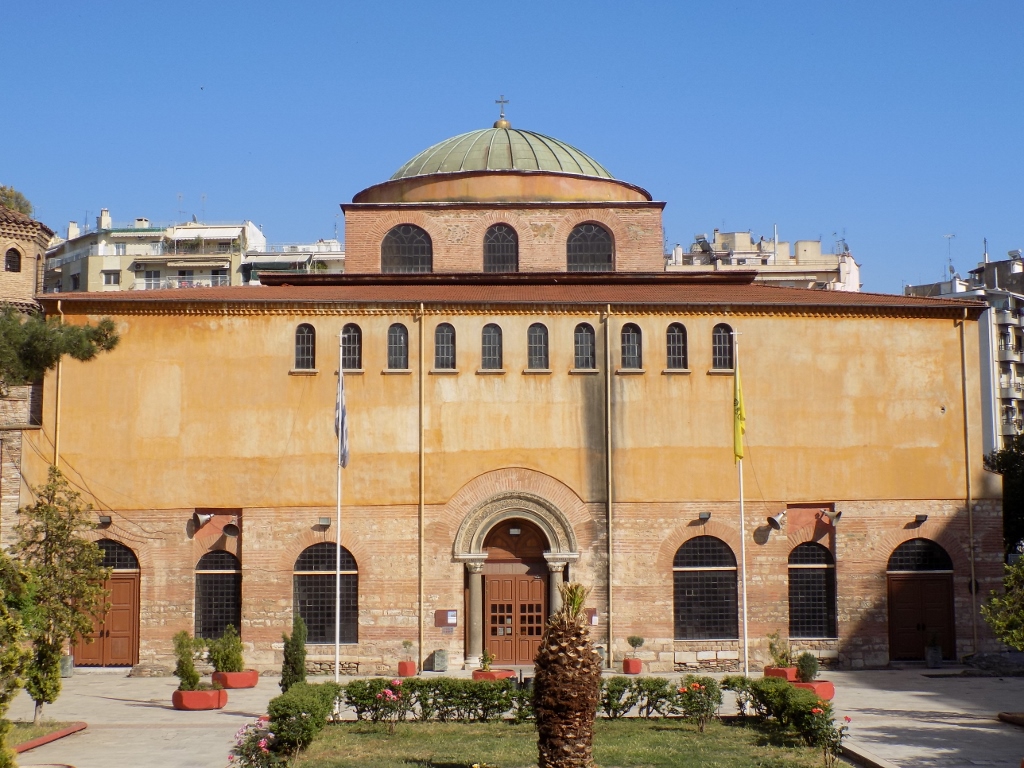 Church of St. Sophia
Church of St. Sophia
The church was built in the 8th century AD, it is huge and has interesting architecture. It has a classic basilica plan and a gallery above the aisles, with a Greek cross plan under the dome. It is known for its capitals, with well preserved 9th and 10th century mosaics in the central dome.
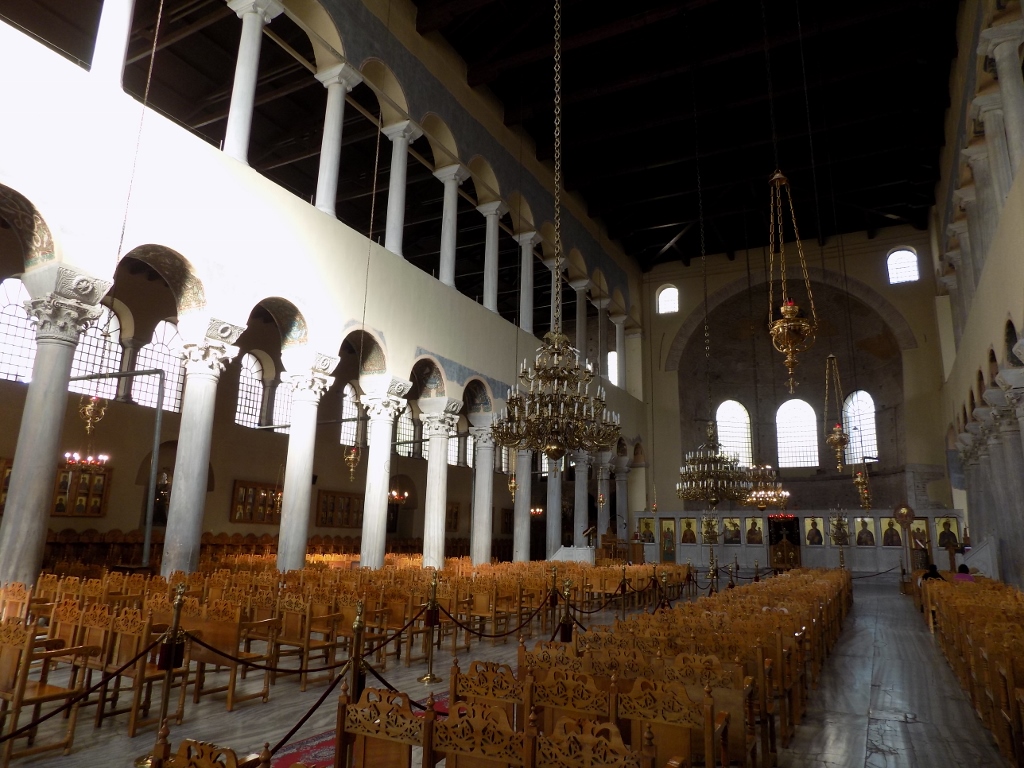 Church of St. Sophia
Church of St. Sophia
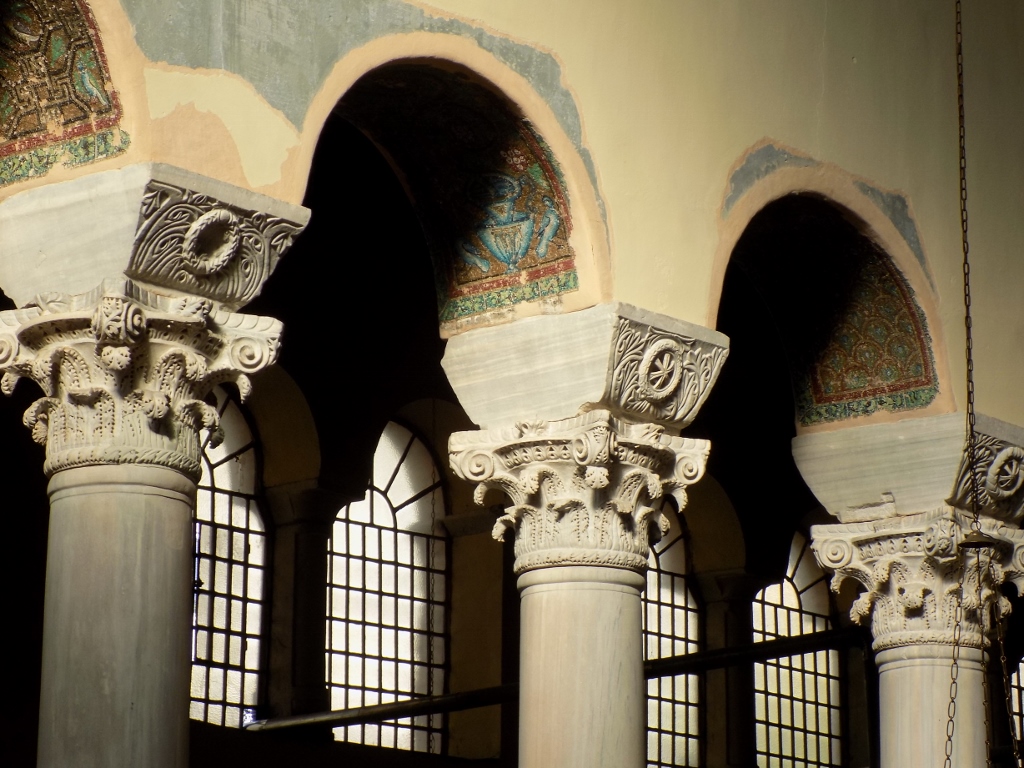 Church of St. Sophia, capitals adorning the columns
Church of St. Sophia, capitals adorning the columns
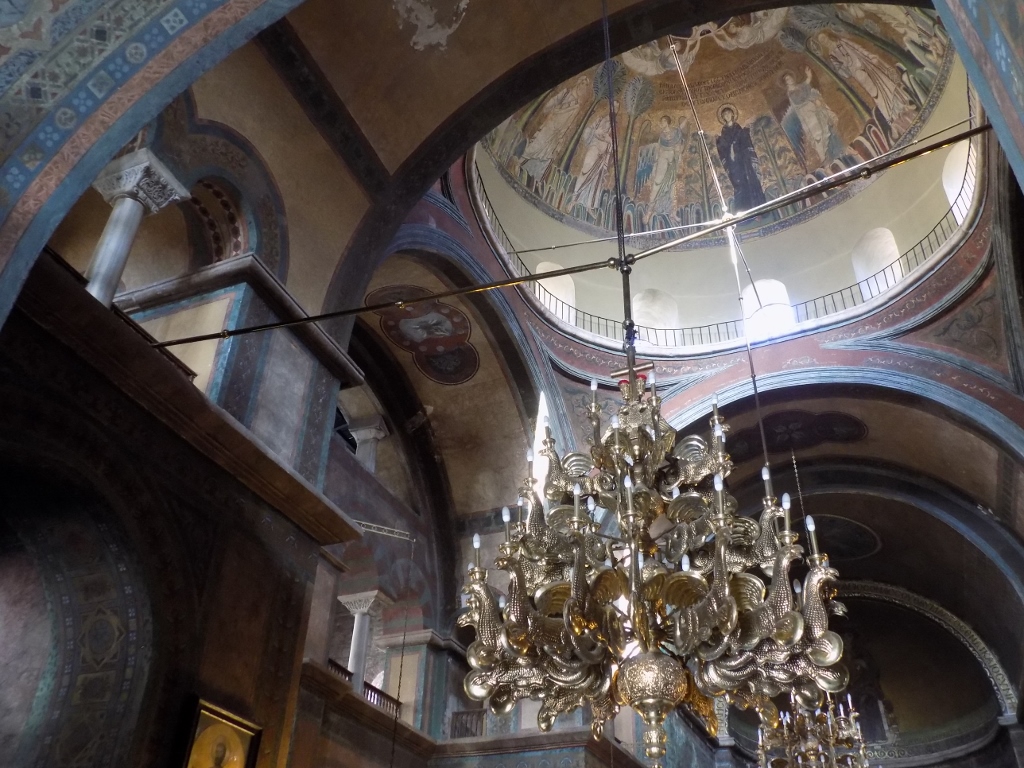 Church of St. Sophia, central dome
Church of St. Sophia, central dome
It was also interesting to see the excavations of the original floors of the temple that may be observed in one of the aisles and that are protected by thick glass.
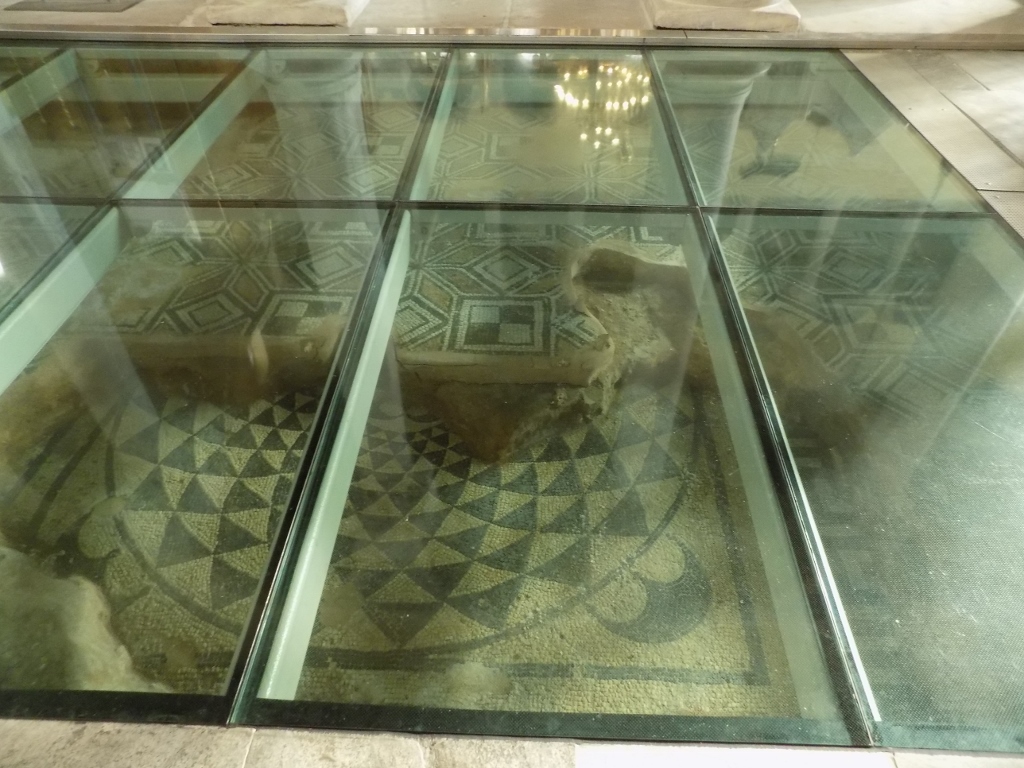 Section of the floor at the Church of St. Sophia
Section of the floor at the Church of St. Sophia
After the visit to the Church of Saint Sophia, I turned into a woman with a mission. I actually like it very much, while in a foreign place, when I give myself a task of finding something not necessarily directly linked to tourism. Thus I was looking for a kiosk of their public transportation company to see which bus I needed to take in order to get to the military cemetery Zeitenlik. I had already tried to find information on local transportation on the internet, but that didn’t help much, plus I had to buy a ticket. With some wandering and asking around, I did manage to find the kiosk, but I didn’t quite get the information I needed. On the other hand, I did get a transportation map (in Greek) and later, using that map and the maps I found on the internet, I eventually managed to establish how to get to the point I wanted.
The next day I was ready to go to Zeitenlik, the Serbian and Allied Forces military cemetery in Thessaloniki. I had already been there once (see: https://www.svudapodji.com/en/northern-greece-2/), but it is such a special place that for me it is not too much going there several times.
So, whoever is interested in doing this using public transportation, the easiest thing is to catch a 27 bus in Egnatia street in which this line has several stops. One needs to go to the bus stops on the “north” side of the street, i.e., to catch a westbound bus with the final destination of Stavroupoli. The tickets should better be bought at kiosks. I bought them at the kiosk of the public transportation company (Oasth), so I don’t know if they can be bought at some other places, but this company has a kiosk at the Aristotle Square (the street section) some 20 m down from Egnatia street. Tickets may also be bought on the bus, but then they are slightly more expensive, plus you have to have exact amount as the machine does not return change. Whatever you do, you need to get off at Simmanika bus stop. Just listen to the talking device on the bus and/or look at the moving displays. They are in Greek and in English, so it is easy to read the name in the Latin script.
My intention was to buy some flowers, but when I got there, there was no flower shop in sight. Across the street from the cemetery, there is a shop with appropriate souvenirs for Serbian visitors, but no flowers. On the side of the street where the cemetery is, there is also a large supermarket, but no flowers there either. Well, what could I do? Nothing, so I just went to the cemetery. As I approached the chapel, I could see a group was already there, so I first walked around the graves that surround the central building for a while.
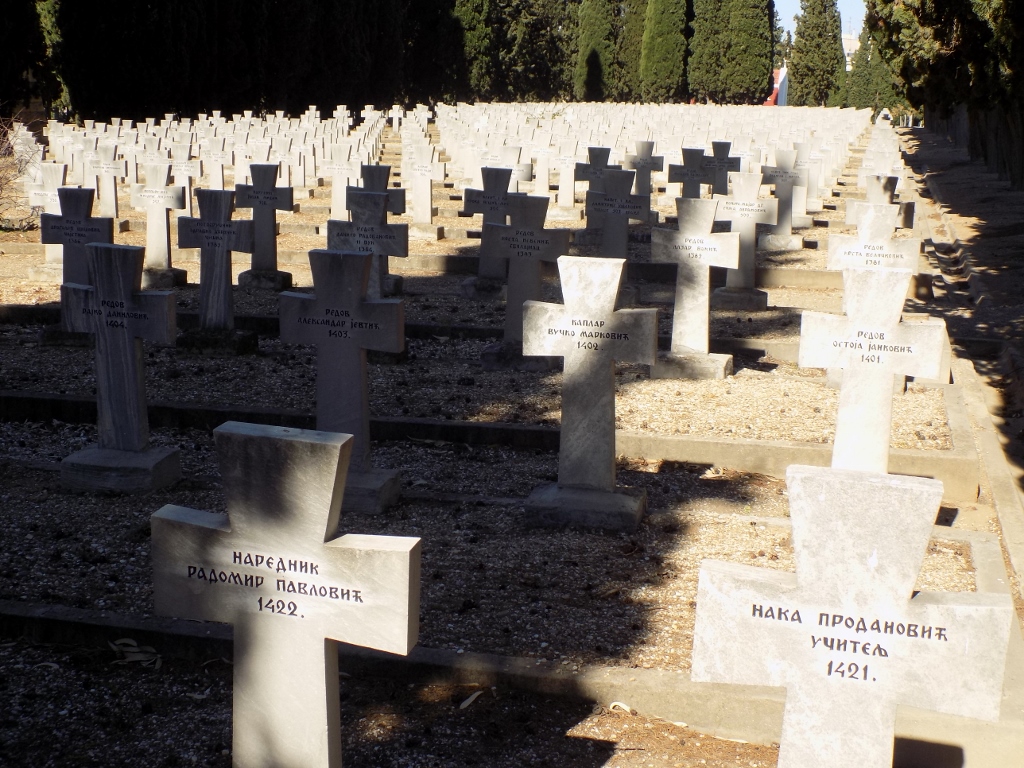 Serbian military cemetery at Zeitenlik
Serbian military cemetery at Zeitenlik
Then I sat on a bench and waited for the group to leave. The crypt and the ossuary are approached from the back side and this is where I entered.
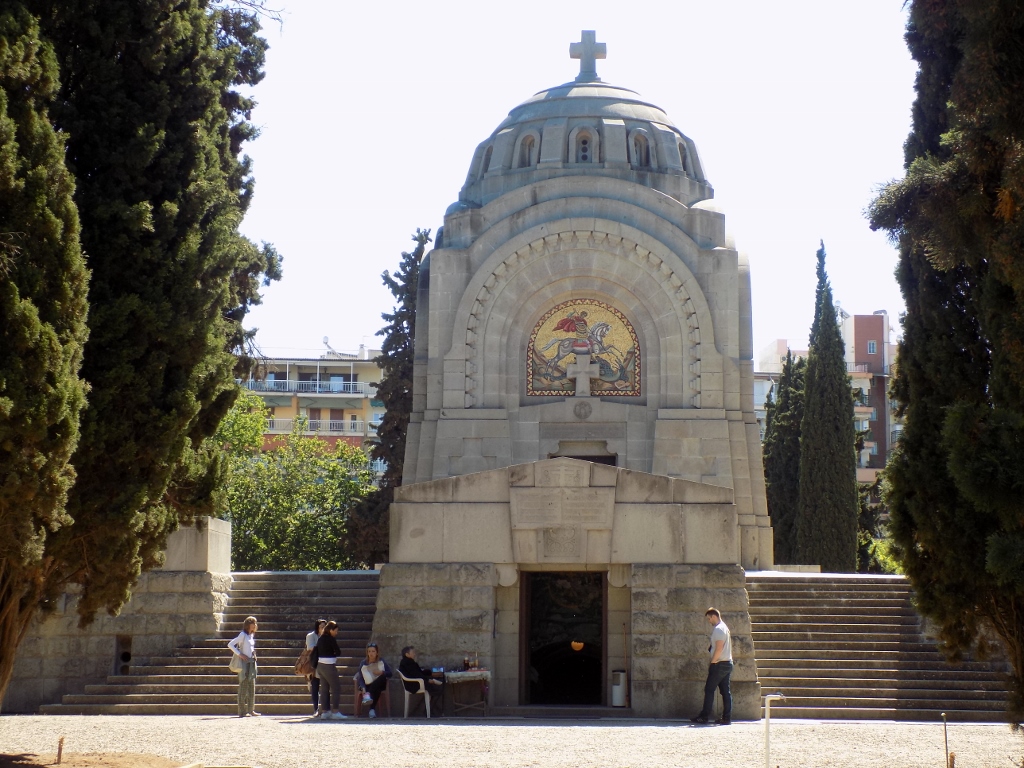 Chapel and the entrance into the crypt at the Serbian military cemetery
Chapel and the entrance into the crypt at the Serbian military cemetery
Places like this move me deeply each time I visit them. This ossuary is like a temple to all the Serbian soldiers throughout the entire history.
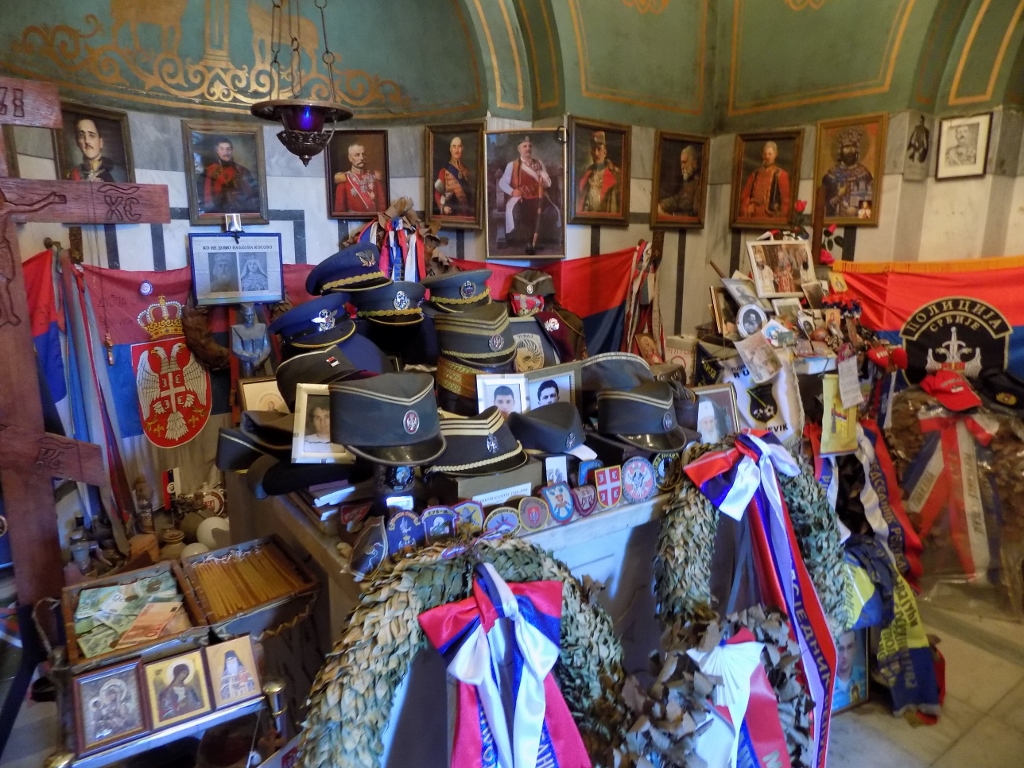 The “altar” at the crypt at Zeitenlik
The “altar” at the crypt at Zeitenlik
World War One and our perished soldiers in particular stir up in me very mixed feelings. On the one hand, in the two Balkan wars and WWI (1912-1918) Serbia lost over 60% of male population, which had huge negative impact on diverse grounds, and on the other hand, these people were such enormous heroes that I cannot help approaching these holy places with utmost respect.
One of the participants of the Macedonian Front (1915-1918) was the famous Milunka Savic whose photograph may be seen in the crypt (she died and was buried in Belgrade in 1973). In 1912, when her brother received a call-up to go to the First Balkan War, Milunka cut her hair, put on male clothes and went instead of her brother to a war that would turn into the Second Balkan War in which she was wounded and it was only then that physicians realized her gender. She refused, however, to withdraw from combat and soon, as a volunteer, she became a participant in WWI, where she also proved most heroic. According to some sources, she is the most decorated female combatant in the world. Among other national decorations, she was awarded with Karadjordje Star with Swords – twice, Milos Obilic and Albanska Spomenica medals, but she also received numerous international recognitions: French Legion of Honour – twice, Russian Cross of St. George and British medal of the Most Distinguished Order of St Michael. In addition, she was the only woman who received the French Cross of War 1914–1918 with the gold palm for her service in WWI.
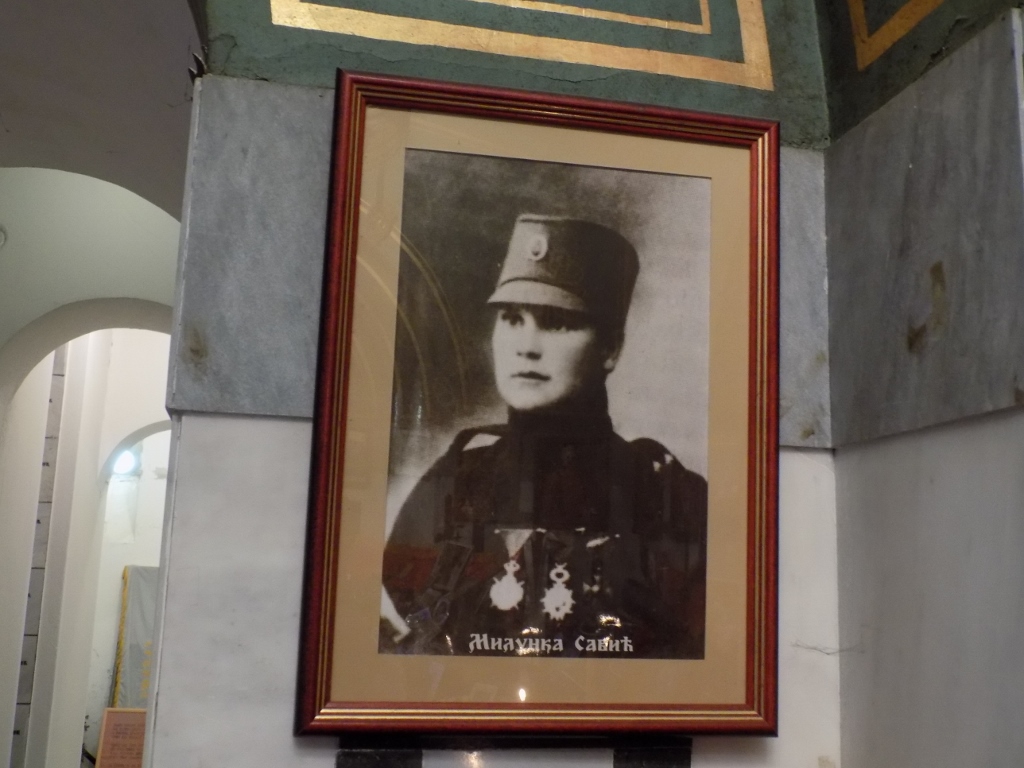 Photograph of Milunka Savic
Photograph of Milunka Savic
In the hallways of the ossuary, it is interested to see the spot marked by number 5027, which originally had “N.N.” (nomen nescio), meaning unknown person. Nowadays there is an added photograph and a note suggesting that it is known whose remains were buried there and it was Coronel Dragutin Dimitrijevic Apis.
Coronel Dimitrijevic was a rather controversial historic figure, who was instrumental for a number of events that took place in the Balkans and much more broadly at the beginning of the 20th century. Namely, he headed a group of officers who in 1903 organized a plot in which King Aleksandar Obrenovic and his wife Queen Draga were killed. This led to a change in the ruling dynasty in Serbia and the Karadjordjevices came to the throne. He was also very much interested in uniting the Serbian population living in the territories ruled by Austro-Hungary with the motherland, so he led the group Crna Ruka (Black Hand) that is considered to be responsible for the assassination of the Austro-Hungarian heir to the throne, Franz Ferdinand, in 1914. This event was the immediate cause for the onset of World War One. In 1917, after military court proceedings, Coronel Dimitrijevic was executed by a firing squad in Thessaloniki based on charges that he had planned assassination of Regent Aleksandar Karadjordjevic. Still, in 1953, this verdict was annulled and Apis was rehabilitated. Therefore, although he was not killed at the Macedonian Front, his remains were laid to rest in the ossuary at Zeitenlik, but since he was not favoured by the Karadjordjevices, it was decided that his name would not be put at the place where he was buried.
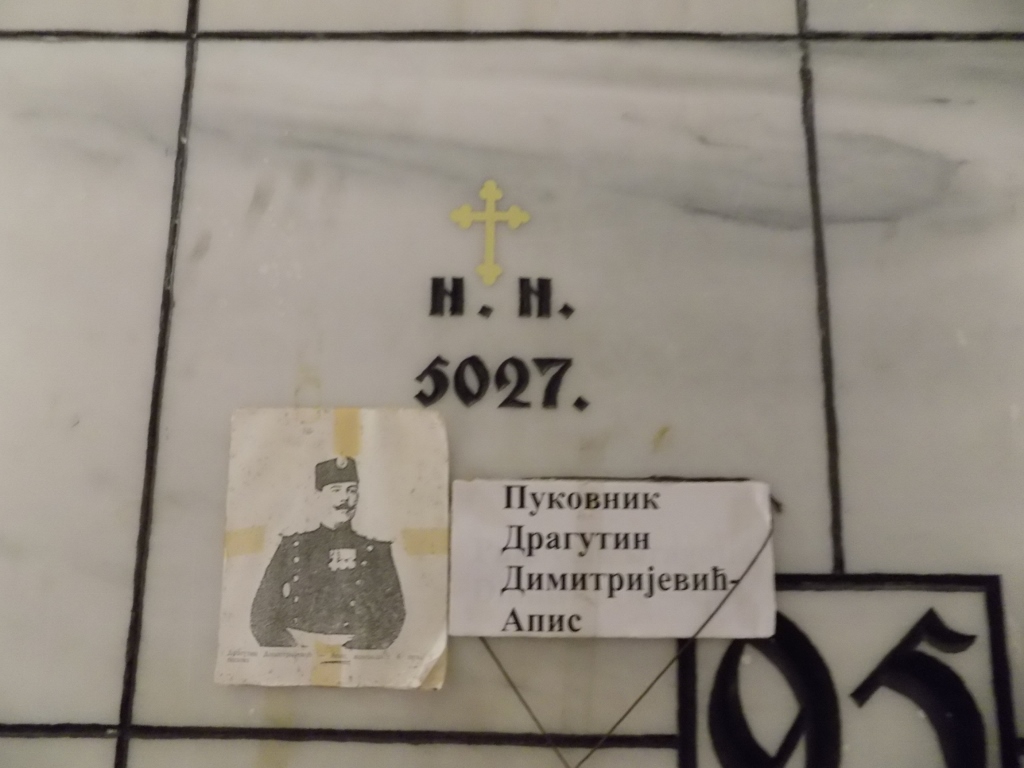 The place containing the remains of Coronel Dragutin Dimitrijevic Apis
The place containing the remains of Coronel Dragutin Dimitrijevic Apis
Everybody who comes here is bound to meet Djordje Mihajlovic, the guardian of the military cemetery. When I entered the crypt, he was just turning off the lights after the visit of the group, but when he saw I was there, he switched them back on and chatted with me for a little while. Have a look at his photo and also at the video clip of our conversation and my visit to the ossuary (with subtitles in English).
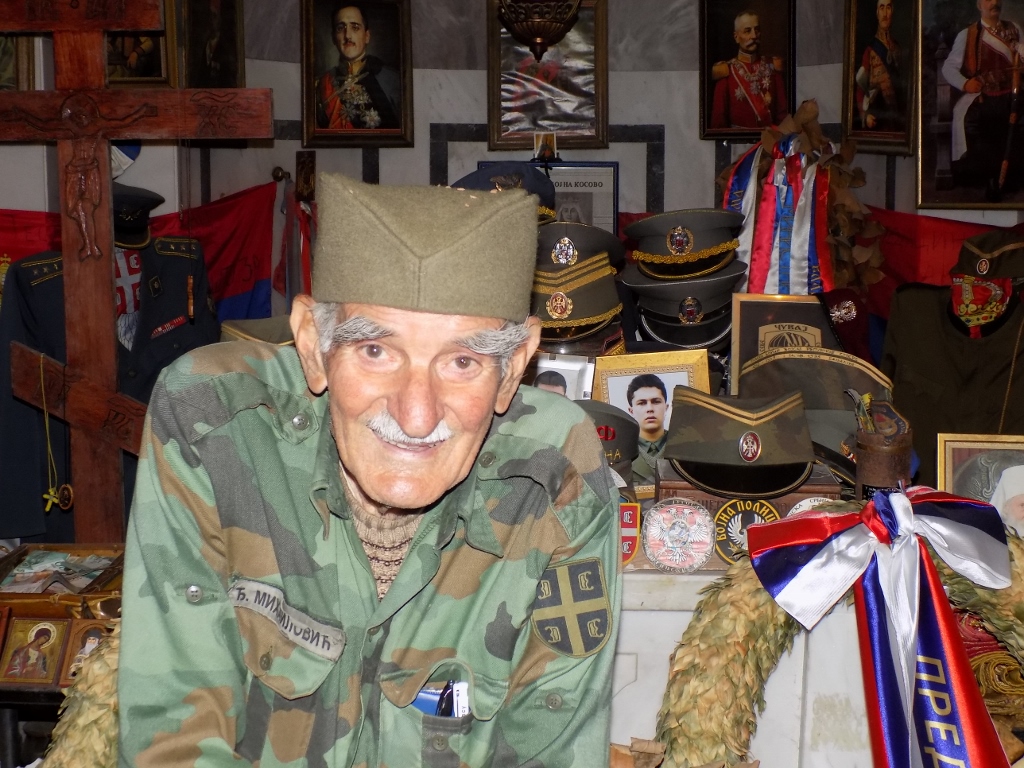 Guardian of the Zeitenlik cemetery, Djordje Mihajlovic
Guardian of the Zeitenlik cemetery, Djordje Mihajlovic
After the visit to the cemetery, I went to a small fair of olives and local products. Namely, as I was standing at the airport having arrived from Belgrade and waiting for the bus to the city, I noticed an ad for the 2nd Gourmet Olive Exhibition. I wrote down the site address and then I looked it up when I had the time. It turned out the fair lasted for only three days, right at the time I was in Thessaloniki, so I decided to go there. This required my by now advanced skill of knowing how to handle the local transportation and I did great. I got off the bus at the right stop, but still I had no clue as to where I was. It was clear I was relatively close to the sea, but in the part of the city where the port is and significantly far from the downtown area. I saw some new, modern business buildings, as well as some old, abandoned factories in the state of decay. I looked around, but there was nothing to suggest where the fair was taking place. I also saw a gas station and headed that way in order to ask for directions, but then I noticed a large board with a poster on the other side of the street and went there.
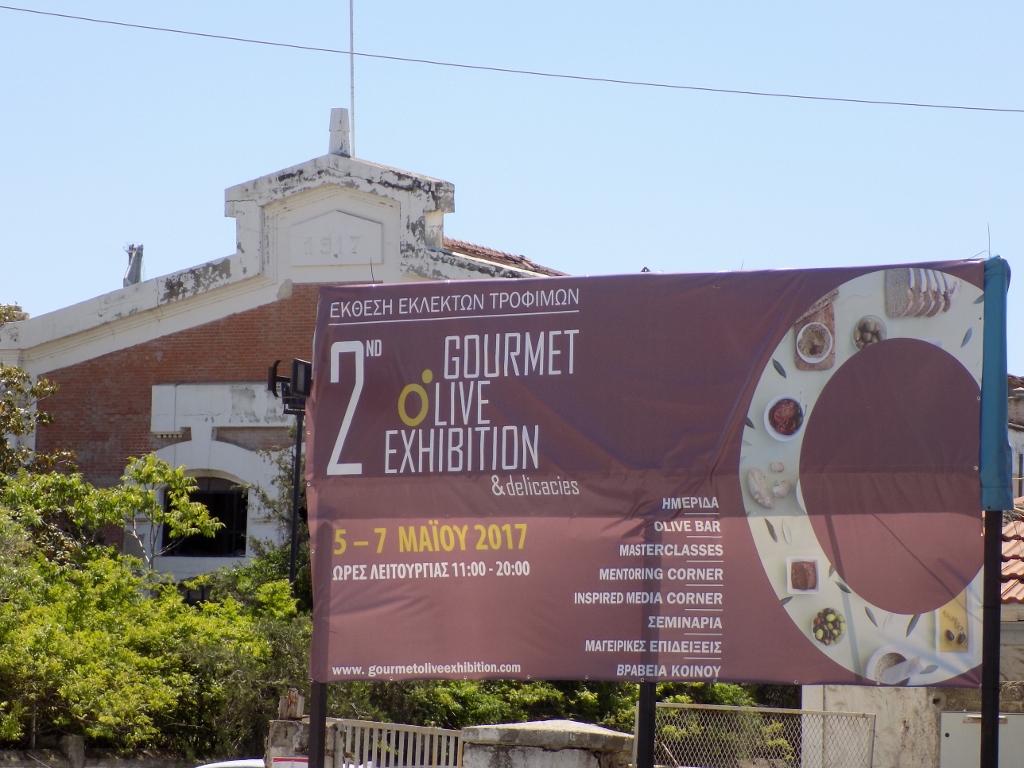 Poster for the 2nd Gourmet Olive Exhibition
Poster for the 2nd Gourmet Olive Exhibition
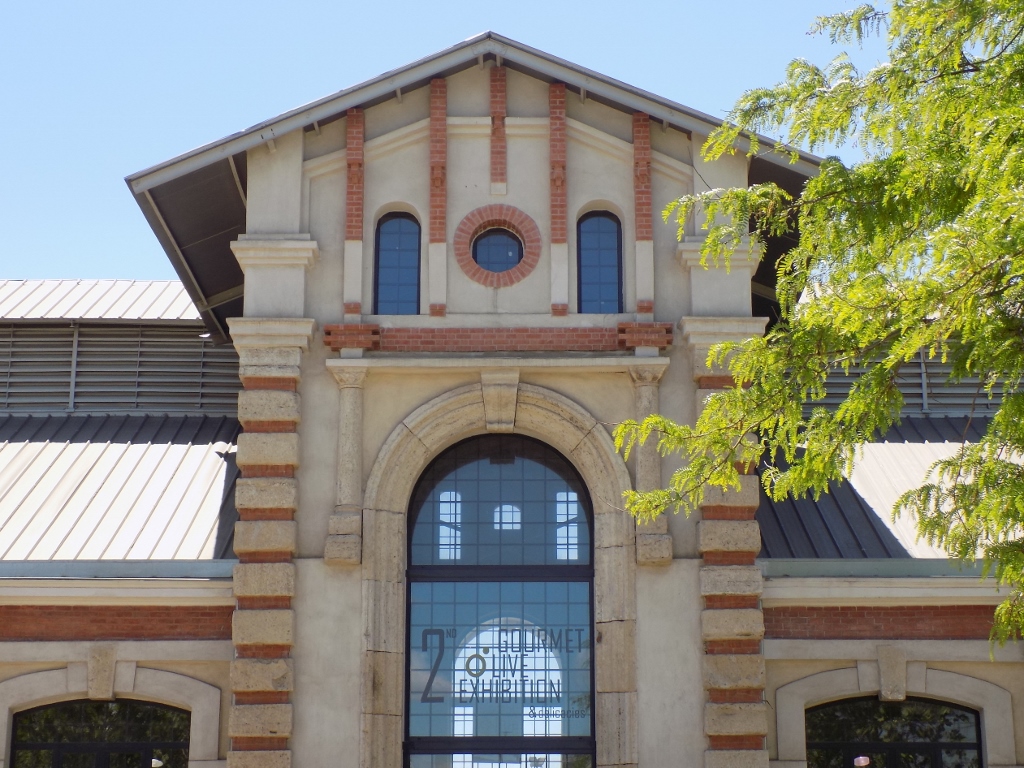 Building hosting the 2nd Gourmet Olive Exhibition
Building hosting the 2nd Gourmet Olive Exhibition
The exhibition, i.e., the mini fair was taking place in the area behind the poster. I entered an old, but nicely kept building and there I saw a large number of tables on which exhibitors displayed their products. There were olives, olive oil, products made of olive oil, honey and honey-based products, dried fruits, jams, chutneys, chocolate...
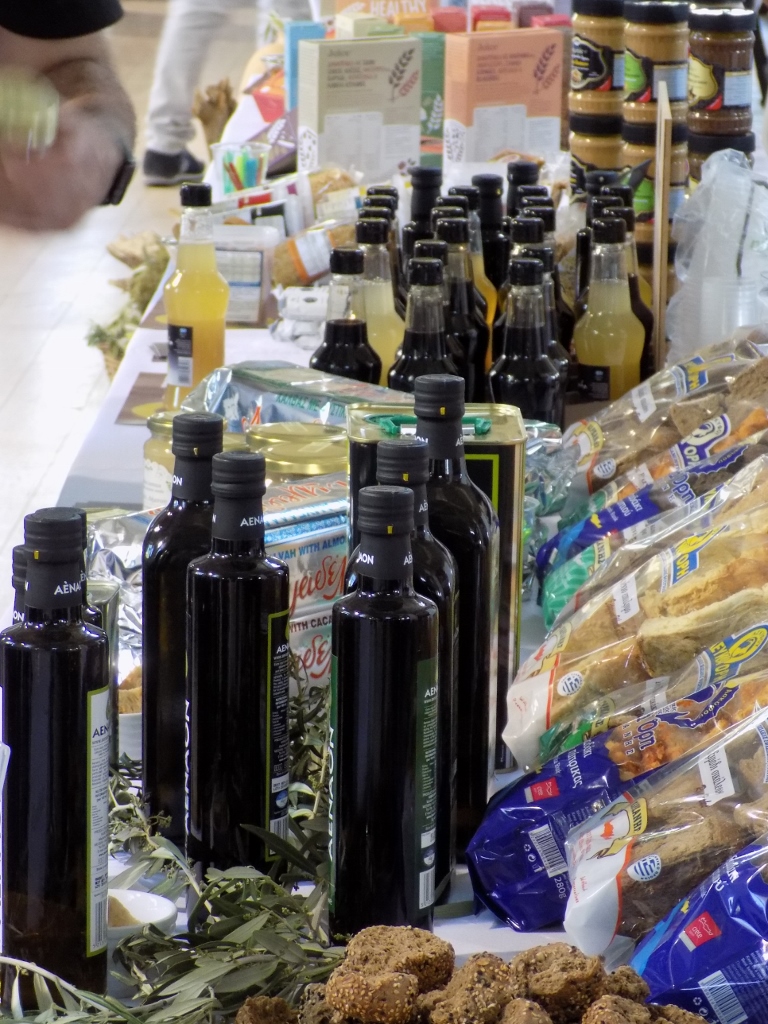 Exhibits at the 2nd Gourmet Olive Exhibition
Exhibits at the 2nd Gourmet Olive Exhibition
I tried all sorts of things. Perhaps it would have been better if I hadn’t had lunch. Joking aside, there were some particularly fantastic and tasty products. However, I didn’t even think of buying olive oil, no matter how wonderful scent and taste it had, for I had to fly back home and I was not keen on packing up a bottle in my suitcase. There was also fantastic mead which I tried, but gave up buying it for the same reasons as olive oil. But, I did buy fig preserve. Properly homemade, not the one that can be bought in Greek supermarkets and that I don’t like. I also bought jam made of bitter orange with cumin seeds which I liked a lot when I tasted it. But what I liked the most were wonderful, plump green olives filled with orange peel. Absolutely divine! If you go to Greece and Chalkidiki, look for them, go to the producer and you will not be sorry. The company is Imperial Olives and its seat is in a place called Polygyros.
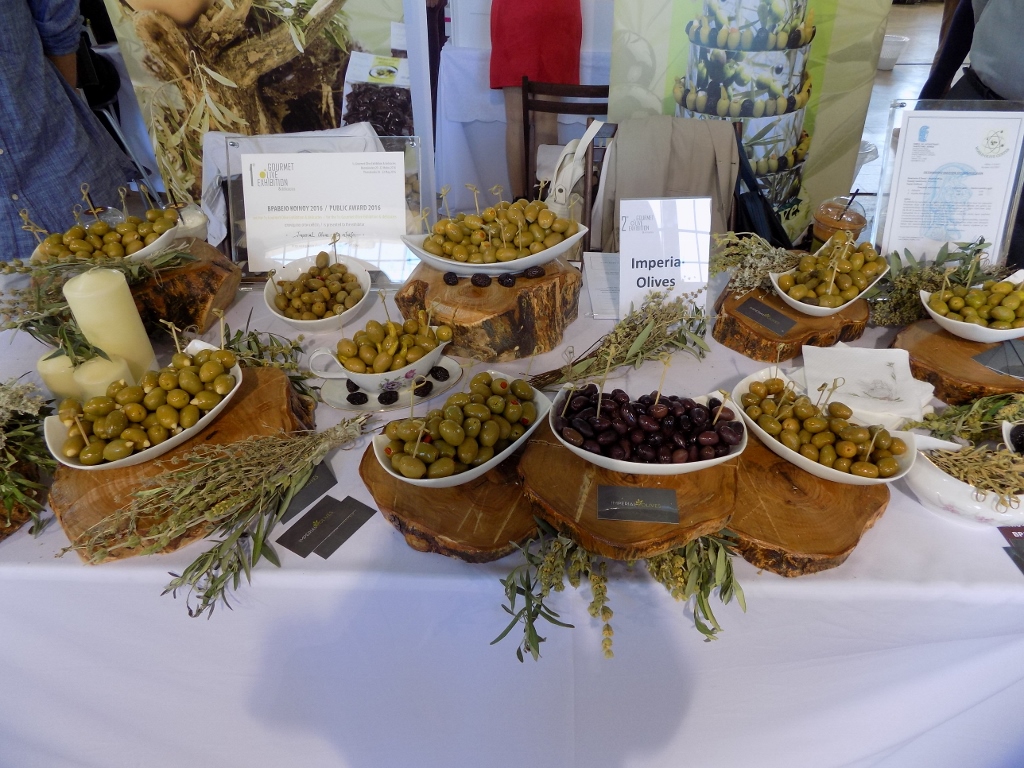 An olive stand at the 2nd Gourmet Olive Exhibition
An olive stand at the 2nd Gourmet Olive Exhibition
After the gourmet break at the fair, I went back to the city and headed for the White Tower in order to visit it. Still, before getting there, in a nearby cafe, I noticed a particularly handsome guy. If I hadn’t felt embarrassed, I would have stood there staring at him with adoration. However, I did hang around in order to take photos and I managed to glance at him a couple of times which brought me a few decades back.
This young man reminded me of my childhood. One of my first “loves” was a student when I was still a girl of around 10. It was at the seaside where I was with my brother and parents, and this student stopped there with his friend in order to visit his mom who worked at the resort. He had long hair and short beard, he did pay some attention to me and talked with me (guys his age usually ignore little girls like I was) and for my little faint heart he was – indescribably divine! I still have very fond memories when I think of him, although I’m sure I would not recognize him if I saw him. But the emotion has remained and the faint memory of male beauty of the Che Guevara type. Aaaaaahhhhh.....